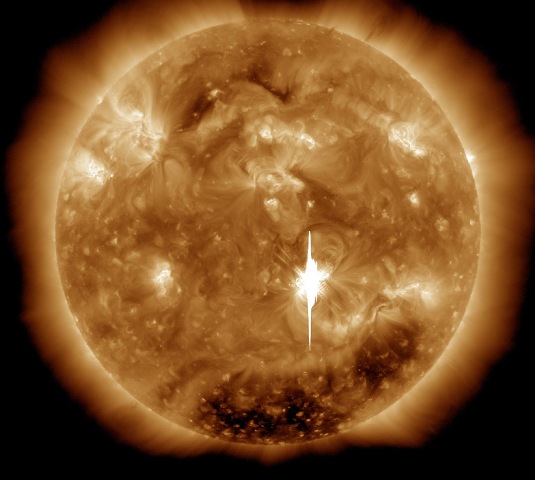Watch out for the northern lights says scientist

There is good news on the horizon for UK sky watchers hoping to catch a glimpse of the mysterious northern lights. After a long period of inactivity, the Sun is flaring up again – which could make this the best chance to see the northern lights in years.
Solar activity triggering a geomagnetic storm could spark dazzling displays of the aurora borealis much further south than the Arctic circle, meaning people in northern Britain could catch a glimpse of the shimmering lights.
Solar activity follows a well-known cycle, gradually shifting from quiet, to disturbed, and then back to quiet every 11 years. The most recent lull was in 2008 and lasted much longer than expected, but in the last few weeks the solar activity has increased dramatically.
On 4th February, a massive cloud of superheated and electrically charged gas slammed into the Earth’s magnetic field. This cloud, known as a coronal mass ejection (CME), had been fired outwards from the Sun a few days earlier and travelled Earthward across interplanetary space in a solar wind stream moving at over 500 kilometers per second.
The impact of the cloud created a geomagnetic storm, leading to displays of the northern lights much further south than usual.
Dr. Jim Wild, a space scientist in the Physics Department at Lancaster University who carries out research into the physics of aurorae, followed the display as it developed via live data feeds from experiments in Iceland and the Faroe Islands.
"Our monitoring station in the Faroes observed a brilliant auroral display on the night of Friday 4th April. I could track the aurora as it crept southward towards Scotland, but it looks like it didn't quite make it as far as the UK" he said.
Nevertheless, aurora hunters in the UK shouldn’t give up. In the early hours of 15th Feb, a massive solar flare, the biggest since 2006, fired a series of CMEs towards the Earth. As these arrive over the next few days, they could trigger auroral displays that can be seen in the skies over the British Isles.
“Aurorae over the UK are notoriously hard to predict, but if the skies are clear and you can get away from sources of light pollutions, then the chances of seeing something the next few nights are probably the best they’ve been for years” said Dr. Wild.
The best time to catch aurorae are the hours around midnight, but a large geomagnetic storm can create displays that last for hours. To try and give would-be spectators a helping hand, Lancaster University operates “AuroraWatch”, a free service that uses sensitive magnetic field sensors in the UK to detect the geomagnetic disturbance that often accompany the northern lights and sends out email alerts to users.
Although they are one of nature’s most elusive phenonema, Dr Wild remains optimistic.
“Displays of the aurora borealis over Britain are pretty rare, typically occurring once or twice a decade, so it’s good to have technology like AuroraWatch to try and tip the odds in our favour. But if the northern lights don’t come out this week, the chances of a display visible from the UK will continue to increase as we move towards the next peak of the solar cycle in 2013, so sign up to AuroraWatch and keep sky watching!”
Aurorawatch website: http://aurorawatch.lancs.ac.uk/
Photo caption: A massive solar flare observed in the early hours of 15th February (seen here in ultraviolet light) was accompanied by a coronal mass ejection that could trigger displays of the northern lights over the UK in the coming days (Photo credit: NASA)